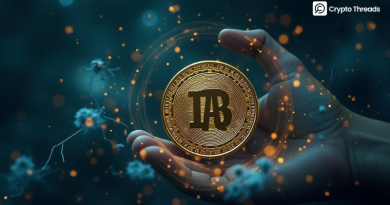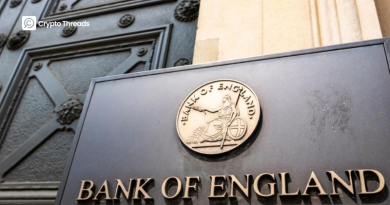Tron IPO: Report
Crypto IPO Markets in 2025
The year 2025 has become a historic milestone for the global cryptocurrency industry, with a series of events that have fundamentally altered the boundaries between the crypto market and traditional financial systems. Within just the first six months of the year, we have witnessed a complete legal transformation – from Circle Internet Group’s successful NYSE listing with a 168% first-day trading surge, to the U.S. Senate passing the GENIUS Act with a 68-30 vote, creating the first regulatory framework for the $232 billion stablecoin market.
To understand the significance of these developments, we must look back at the context from just one year ago. Under Gary Gensler’s SEC, the cryptocurrency industry faced extremely stringent regulatory barriers, with dozens of lawsuits initiated. Circle had to cancel its SPAC listing plans in 2022 due to the harsh regulatory environment. An IPO seemed like a distant dream for any crypto companies, not to mention Tron IPO only.
However, in late 2024, there were positive changes. Since early 2025, the SEC has withdrawn at least eight major lawsuits, including the four-year case against Ripple. The Trump administration appointed Paul Atkins – a cryptocurrency advocate – as SEC Chairman and established a crypto task force to promote favorable regulations.
Circle’s IPO opened the door for a wave of public listings, with Gemini, Kraken, and Ripple all preparing their own IPO plans. Following the passage of stablecoin legislation, Circle’s stock soared to $199.59 compared to its initial IPO price of $31, demonstrating strong investment demand for crypto companies with clear legal frameworks.
It is within this context of positive regulatory change that the reverse merger between Tron and SRM Entertainment represents more than just a financial transaction – it symbolizes the convergence of three powerful trends: fundamental changes in U.S. regulatory policy, increasing acceptance of digital assets by traditional financial markets, and the emergence of entirely new business models connecting the DeFi world with Wall Street.
If Circle proved that “pure” crypto companies can succeed in public markets, the Tron transaction will test a bolder hypothesis: whether a traditional company can completely transform into a “crypto treasury” and still maintain investor confidence.
Decoding the Reverse Merger Mechanism: The Shortcut to Wall Street
To understand the Tron IPO and its rapid listing on Wall Street, one must first grasp the concept of a reverse merger. Think of a reverse merger like someone wanting a luxury apartment but not wanting to go through the lengthy bank loan application process. Instead, they decide to buy an entire existing apartment, complete with all legal documentation.
In this case, Tron plays the role of the buyer (the private company wanting to go public), while SRM Entertainment is the ready-made apartment (the company already listed on Nasdaq). Through a reverse merger, Tron can “leapfrog” over the entire traditional IPO process – a process that typically takes over a year and costs millions in fees.
Before being acquired by Tron, SRM Entertainment operated a straightforward business—designing and producing licensed toys and souvenirs for major names like Disney Parks, Universal, and Six Flags. It had no ties to blockchain or crypto. But for Tron, SRM’s real value wasn’t in its product lines—it was the Nasdaq listing itself, a fast track for the TRON IPO to bypass the traditional, lengthy IPO process.
Once the merger is finalized, SRM Entertainment will be renamed Tron Inc., and its entire business model will pivot to crypto. This strategy enables a rapid Tron IPO without enduring the time, cost, and scrutiny of a traditional IPO process.
Financial Structure: The Art of “Converting Cryptocurrency to Stocks”
At the heart of the TRON IPO is a three-layered financial structure engineered to serve multiple objectives. The financial foundation of this transaction is built on a complex but very intelligent financial structure. Imagine this like constructing a building with multiple floors, each serving a different purpose.
The first floor is a $100 million PIPE (Private Investment in Public Equity) investment. What makes this special is that the investment is paid entirely in TRX tokens, not cash. This means that instead of injecting new cash into the company, Tron is “exchanging” its tokens for shares in the listed company. This is a very smart move because it creates a closed loop: the company is established to hold TRX and is funded by that very same TRX.
The second floor includes Series B convertible preferred shares. SRM will issue 100,000 of these shares, each convertible to 2,000 common shares at $0.50 per share. In total, if fully converted, 200 million new common shares will be created.
Finally, the third floor consists of 220 million warrants, allowing holders to purchase common shares at $0.50 per share. If all warrants are exercised, the company will raise an additional $110 million in cash. Combined with the initial PIPE investment, total potential capital could reach $210 million.
This structure is cleverly designed to achieve three goals simultaneously: transfer control to the new investor (Tron), create a massive TRX treasury, and create a compelling story for the stock market.
Market Reaction about TRON IPO: The Difference Between DeFi and TradFi
The market’s reaction to the TRON IPO’s announcement has created an extremely interesting and unexpected phenomenon.
On one end, the traditional stock market has responded with tremendous excitement. SRM Entertainment stock has surged wildly, with recorded increases ranging from 533% to 647% within just a few days. Stock price jumped from around $1.45 to a peak of $10.84. Trading volume also exploded from about 2 million shares to 250 million shares – an increase of more than 100 times.
This growth was not driven by SRM’s fundamental financials, but by the compelling story of a new way to access the cryptocurrency market through traditional stocks. For equity investors, this represents an opportunity to “piggyback” on Tron’s growth without having to buy and store cryptocurrency themselves.
However, on the opposite end, the reaction of the TRX token has been completely contrary. Despite this clearly being positive news for the Tron ecosystem, the TRX token only increased modestly by 2.5% to 9%. This creates an interesting paradox: the same event, but the “underlying” asset (TRX) increased much less than the “derivative” asset (SRM stock).
This asymmetry shows that token investors and equity investors evaluate the same information in completely different ways. For the crypto community, the promise of purchasing $100-210 million worth of TRX is just a drop in the ocean compared to TRX’s total market capitalization of over $25 billion. Meanwhile, equity investors see this as a golden opportunity to access a large blockchain ecosystem through a regulated and familiar vehicle.
The “Crypto Treasury” Strategy: Learning from MicroStrategy
The core strategy that Tron Inc. intends to pursue is not entirely new. It is a deliberate copy and adaptation of the proven successful model of MicroStrategy – a company that transformed itself into a “Bitcoin treasury” and reaped enormous profits.
Think of their strategy like a bank deciding to specialize in a single currency. Instead of diversifying its investment portfolio, Tron Inc. will focus entirely on buying and holding TRX tokens. The goal is to become a “proxy” – or simply put, a representative – for the entire Tron ecosystem in the traditional stock world.
What makes this strategy particularly interesting is the income generation mechanism. Rather than simply holding tokens passively, Tron Inc. plans to “stake” all of its TRX. Staking is like depositing money in a bank savings account, but instead of receiving interest from the bank, you receive rewards for helping secure and operate the blockchain network
These staking rewards will then be used to pay dividends to shareholders – a completely new mechanism in the traditional financial world. This means investors will receive two types of returns: stock price appreciation (when TRX price increases) and regular dividends (from staking rewards). This is like owning a house that both appreciates in value and generates rental income each month.
However, this approach is inherently risky. It transforms TRON Inc. into a single-asset treasury, highly vulnerable to TRX’s market fluctuations. When prices rise, returns are amplified; when markets dip, the downside is just as severe.
Political Aspects: The Power Network Behind
One of the most complex and controversial aspects of the TRON IPO transaction is its deep connection to the U.S. political landscape. To understand this clearly, we need to look at the complex network of relationships that has been woven around the transaction.
At the center of this network is Dominari Securities, the investment bank serving as intermediary for the entire transaction. Dominari is not an ordinary investment bank. Their headquarters is located in Trump Tower, just two floors away from The Trump Organization’s office. This is not merely a geographical coincidence, but a manifestation of a deep business relationship.
Dominari Securities’ parent company has appointed both Donald Trump Jr. and Eric Trump to its advisory board, with each receiving compensation of up to 750,000 shares. This is a significant figure, showing their importance to the company’s strategy.
Parallel to Dominari’s role, Justin Sun – Tron’s founder – has actively built strategic political relationships. He invested $75 million in World Liberty Financial, a Trump family cryptocurrency company. Following this investment, WLF issued its first stablecoin on the Tron blockchain itself, creating a clear symbiotic relationship.
Most notably is the timing of events. In 2023, the SEC formally charged Justin Sun and Tron with fraud allegations. This was a serious legal threat that could completely destroy Tron’s business plans in the United States. However, in February 2025, right after Sun made investments in Trump-related projects, the SEC agreed to suspend the lawsuit.
This chain of events – an SEC lawsuit, followed by strategic investments in politically influential entities, and then the suspension of the lawsuit – creates a strong perception that legal decisions may be influenced by political factors.
This raises serious questions about the independence of the financial regulatory system. It creates concerns that Tron Inc.’s success may depend more on political relationships than on actual business value. This is an enormous “key personnel” risk – a change in administration could completely reverse the legal environment for the company.
Reverse Mergers in the Context of Tightening Regulation
Tron’s choice of the reverse merger path comes at a particularly sensitive time. The SEC is actively tightening regulations around this type of transaction, viewing them as “backdoors” to avoid oversight.
To grasp the significance of various approaches to a cryptocurrency company’s public listing, consider these three primary paths:
- Traditional IPO: This resembles seeking permission to construct a house from its foundation. It’s characterized by extensive paperwork, a lengthy timeline, and high costs, yet it culminates in a highly credible and respected outcome.
- SPAC Merger: Comparable to purchasing a partially built house with existing permits, this method is quicker than a traditional IPO but still involves considerable procedures and expenses.
- Reverse Merger: This is akin to acquiring an existing, older house for renovation. It’s the swiftest and most economical option, but it may entail undesirable “legacy” issues and often raises community skepticism regarding quality.
Recently, the SEC has passed new rules making reverse mergers much more difficult. These rules treat any business combination involving shell companies as “securities sales,” significantly increasing legal liability and registration requirements.
Tron’s decision to proceed with a reverse merger in this context shows a high level of confidence that they can overcome legal obstacles. This confidence may not stem from the legal strength of the transaction structure, but from the political relationships they have built.
The Tron Ecosystem: Foundation for Ambition
To assess Tron Inc.’s long-term prospects, we need to understand the underlying asset the company will hold: the Tron ecosystem and TRX token.
Tron’s greatest strength is its dominant position in the stablecoin market. The Tron network currently stores over $78 billion worth of USDT, accounting for more than 50% of the global supply of the world’s largest stablecoin – an extremely large competitive advantage.
This dominance is built on a solid technological foundation: high transaction speeds (up to 2,000 transactions per second) and extremely low transaction fees. For users, especially in emerging markets, being able to transfer money quickly at a cost of just a few cents is an irresistible value proposition.
The Tron ecosystem also has other impressive numbers: over 300 million user accounts, over 10 billion transactions since launch, and about 8.4 million transactions daily. Total value locked in Tron’s DeFi ecosystem ranges between $8-10 billion, ranking second only to Ethereum.
However, this ecosystem also has concerning weaknesses. Transaction fees for USDT transfers have increased significantly, potentially exceeding $3.69, eroding Tron’s main competitive advantage. The consensus model relying on only 27 Super Representatives also raises concerns about centralization. Most importantly, a recent report flagged Tron as hosting 58% of illegal cryptocurrency activity in 2024.
Risks and Opportunities: The Gamble
To understand the Tron-SRM transaction, imagine an investor deciding to put all their assets into a single risky asset. The TRON IPO represents a bold investment gamble, with potential for high rewards and equally significant risks.
Main Risks the Company Faces
The biggest risk is complete dependence on TRX price. The cryptocurrency market is notorious for terrible volatility – we have witnessed Bitcoin lose over 80% of its value in bad cycles. If TRX collapses, the treasury value and Tron Inc.’s stock will fall accordingly, creating a self-destructive feedback loop.
At first, legal risk is equally concerning. The SEC lawsuit against Justin Sun is only “suspended,” not “dismissed.” This is like a time bomb that could be activated at any time, especially if the political landscape changes.
Secondly, Particularly dangerous is political risk. Tron’s strategy appears to be built on relationships with the current administration. A political change could cause the company to lose its protective “shield” and face a harsher regulatory environment.
Finally, dependence on Tether and USDT creates systemic risk. Over 50% of global USDT is stored on Tron, but if Tether encounters problems or switches to another blockchain, Tron’s core operations could collapse overnight.
Potential Opportunities
On the positive side, if successful, Tron Inc. could become the standard model for the wave of publicly listed crypto companies. This “first-mover” advantage has great value in building brand and attracting partners.
A key innovation is its dividend mechanism from staking, which uniquely blends the stability of traditional dividends with the growth potential of digital assets. This could draw in many traditional investors new to crypto, offering them a secure entry point into the cryptocurrency market through Tron Inc. stock.
The dominant position in the USDT market is also a potential “goldmine.” With the trend of tokenizing real assets increasing, Tron could expand from just storing USDT to becoming a platform for many other types of stablecoins.
Broader Impact: Redefining the Rules of the Game
The Tron-SRM transaction is important not just for Tron alone but could reshape the entire cryptocurrency industry. It opens a new path for large blockchain companies to access traditional capital markets, but also sets a dangerous precedent about the role of political influence in the regulatory process.
For other cryptocurrency companies, this is both an opportunity and a challenge. The opportunity is they can learn from Tron’s model and find ways to apply it to themselves. The challenge is this path may only be available to companies with sufficient scale and political connections.
For regulators, this is a serious test. If they allow Tron to succeed without strict oversight, it could create a wave of other companies trying to copy this model. Conversely, if they intervene strongly, they may be seen as hindering financial innovation.
Conclusion: The Gamble of the Century
The Tron-SRM transaction is one of the most important events in the history of the intersection between cryptocurrency and traditional finance. It represents a bold experiment in the ability of large blockchain companies to access public capital markets through non-traditional paths.
The success or failure of Tron Inc. will have profound impacts not only on Tron itself but on the entire cryptocurrency industry. It could open a new era of integration between DeFi and TradFi, or become a cautionary tale about the dangers of mixing business with politics.
For investors, this is an investment opportunity that is both attractive and extremely risky. They are not only betting on the future of blockchain technology but also on Justin Sun and his team’s ability to navigate the complex political environment.
At its core, the TRON IPO raises a bigger question about the future of finance: Can the mix of cutting-edge tech and strategic political alignment generate lasting value, or is it simply a short-lived bubble powered by hype and influence? How this plays out could redefine how crypto companies approach going public.
Tron Inc. isn’t just another newly listed company. It’s a symbol of crypto’s attempt to gain long-term legitimacy in the traditional financial world. No matter how the story ends, this bold move has earned its place in financial history, a turning point that’s as dramatic as it is unfinished.



